

Heart-Wrenching Video Shows Starving Polar Bear on Iceless Land. When photographer Paul Nicklen and filmmakers from conservation group Sea Legacy arrived in the Baffin Islands, they came across a heartbreaking sight: a starving polar bear on its deathbed.

Nicklen is no stranger to bears. From the time he was a child growing up in Canada's far north the biologist turned wildlife photographer has seen over 3,000 bears in the wild. But the emaciated polar bear, featured in videos Nicklen published to social media on December 5, was one of the most gut-wrenching sights he's ever seen. "We stood there crying—filming with tears rolling down our cheeks," he said. Video shows the polar bear clinging to life, its white hair limply covering its thin, bony frame. In the days since Nicklen posted the footage, he's been asked why he didn’t intervene. "Of course, that crossed my mind," said Nicklen. And even if he did, said Nicklen, he only would have been prolonging the bear's misery.
Climate Change. Extinct or Not? Coral Reefs Could Be Gone in 30 Years. The world’s coral reefs, from the Great Barrier Reef off Australia to the Seychelles off East Africa, are in grave danger of dying out completely by mid-century unless carbon emissions are reduced enough to slow ocean warming, a new UNESCO study says.

And consequences could be severe for millions of people. The decline of coral reefs has been well documented, reef by reef. But the new study is the first global examination of the vulnerability of the entire planet’s reef systems, and it paints an especially grim picture. Of the 29 World Heritage reef areas, at least 25 of them will experience twice-per-decade severe bleaching events by 2040—a frequency that will “rapidly kill most corals present and prevent successful reproduction necessary for recovery of corals,” the United Nations Educational, Scientific and Cultural Organization concluded.
In some areas, that’s happening already. “These are spectacular places, many of which I’ve visited. Mass Bleachings Time to Act. Climate change mindmap questions. The Story of Stuff. El agujero de la capa de ozono se recupera por primera vez. El agujero no se cerrará hasta mediados de este siglo Las acciones humanas tienen consecuencias.
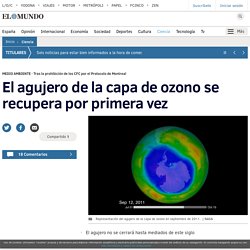
Tanto cuando generan un problema de forma no intencionada, como cuando la Humanidad se pone de acuerdo para solucionarlo y lo consigue al cabo de unos cuantos años. Cuando fue descubierto en los 80, el agujero en la capa de ozono se convirtió en una de las mayores amenazas ambientales y en uno de los más conocidos símbolos de la capacidad del ser humano para provocar daños al medio ambiente sin querer.
La pérdida de esta capa alta -estratosférica- de la atmósfera formada por moléculas de tres átomos de oxígeno está relacionada con el aumento de casos de cáncer de piel, ya que actúa como filtro para los dañinos rayos ultravioleta que provienen del Sol. Y hoy, casi 30 años después, aquel esfuerzo mundial ha dado sus frutos. Sir David Attenborough: We Need To Create Cheap, Renewable Energy. Social Sciences Year 8 Lesson #10 Climate change #1 Teachers TV Climate Change The Causes YouTube.
Social Sciences Year 8 Lesson #11 video debate climate change. Social Sciences Year 8 Lesson #12 Climate change #3 What YOU Can Do About Climate Change YouTube. Bill Nye the Science Guy Knows How to Fix Climate Change. Bill Nye brought science into kids’ lives and made us laugh.
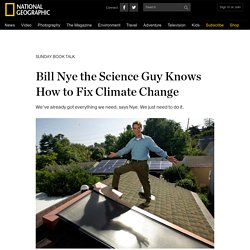
He inspires memes, has his own bow tie line and has appeared on numerous television shows, including, earlier this month, alongside Arnold Schwarzenegger, National Geographic Channel’s Explorer series. He’s even been a guest on Dancing With the Stars. Short Answers to Hard Questions About Climate Change. 3.
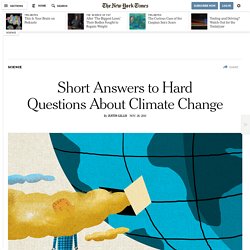
Is there anything I can do? Fly less, drive less, waste less. You can reduce your own carbon footprint in lots of simple ways, and most of them will save you money. You can plug leaks in your home insulation to save power, install a smart thermostat, switch to more efficient light bulbs, turn off the lights in any room where you are not using them, drive fewer miles by consolidating trips or taking public transit, waste less food, and eat less meat.
Perhaps the biggest single thing individuals can do on their own is to take fewer airplane trips; just one or two fewer plane rides per year can save as much in emissions as all the other actions combined. If you want to offset your emissions, you can buy certificates, with the money going to projects that protect forests, capture greenhouse gases and so forth. In the end, though, experts do not believe the needed transformation in the energy system can happen without strong state and national policies. Channel.nationalgeographic. And Now for Some Good News About Climate Change. There are now only 39 days to go until the world’s nations convene in Paris for the United Nations Climate Summit.
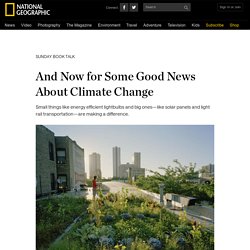
Six years ago, talks in Copenhagen ended in chaos. Is there any reason to suppose Paris will deliver anything more than well-padded expense accounts for delegates and hot air on the issues? In his new book, Atmosphere of Hope: Searching For Solutions To The Climate Change Crisis, best-selling Australian author Tim Flannery counsels cautious optimism by showing how the millions of small actions taken by individuals are driving down oil consumption and points out how new “Third Way” carbon-capture technologies promise to reduce emissions and create massive economic opportunities.
Images of Change. Climate Change: Vital Signs of the Planet: Consensus. Multiple studies published in peer-reviewed scientific journals1 show that 97 percent or more of actively publishing climate scientists agree: Climate-warming trends over the past century are extremely likely due to human activities.
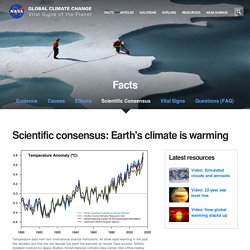
In addition, most of the leading scientific organizations worldwide have issued public statements endorsing this position. The following is a partial list of these organizations, along with links to their published statements and a selection of related resources. UK Met Office - Climate guide. Find out about climate, climate change and climate science in our climate guide The following pages include information around what climate is and what influences it, how and why our climate is changing and the work we undertake to help the UK prepare for future changes.
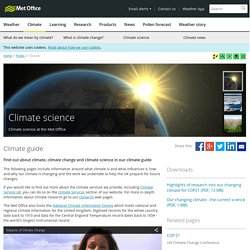
If you would like to find out more about the climate services we provide, including Climate Service UK, you can do so on the climate services section of our website. For more in-depth information about climate research go to our research web pages. The Met Office also hosts the National Climate Information Centre which holds national and regional climate information for the United Kingdom. Digitised records for the whole country date back to 1910 and data for the Central England Temperature record dates back to 1654 - the world's longest instrumental record. Climate Change Maps. Climate Change and Energy Production. GLOBAL WARMING DENIAL.